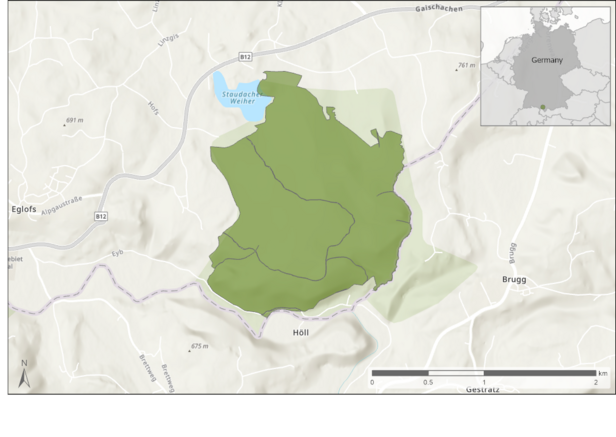
C10 Osterwald Eglofs ¶
A cooperative forest enterprise ¶

Portrait of the Osterwald Cooperative.
| Geology | Glacial moraine (Würm period); hilly, south-western Alpine foothills |
| Climate | Submontane, 600–700 m.a.s.l. |
| Topography/Site | 80 % plain to slightly inclined slopes, 20 % steeper slopes |
| Average annual precipitation/temperature | 1500 mm/7 °C |
| Potential natural vegetation | Submontane mixed mountain forest composed of Norway spruce (Picea abies), silver fir (Abies alba) and beech (Fagus sylvatica): 75 % Ravine forest communities: 10 % Peatland and riparian forests: 15 % |
| Total forest area | 261 ha |
| Tree species composition | Norway spruce (57 %); silver fir (25 %); beech (8 %); other broadleaves (9 %) including ash (Fraxinus excelsior), alder (Alnus glutinosa), sycamore (Acer pseudoplatanus); other conifers (1 %) |
| Annual growth | Annual increment amounts to about 13 m³/ha. Annual increment for Norway spruce is estimated at around 15 m³/ha and even higher for silver fir |
| Total volume | 515 m³/ha |
| Annual cutting rate | 13.5 m³/ha |
| Regeneration | On 60 % of the total area |
| Protected areas | – Natura 2000 area: 100 % – Forest biotopes: 10 % – Nature conservation areas: 1 % – Forest areas for soil protection: 17 % |
| Recreation areas | The entire Osterwald is designated as recreational area |
| Hunting | Implemented by Osterwald Cooperative since 1992 |
